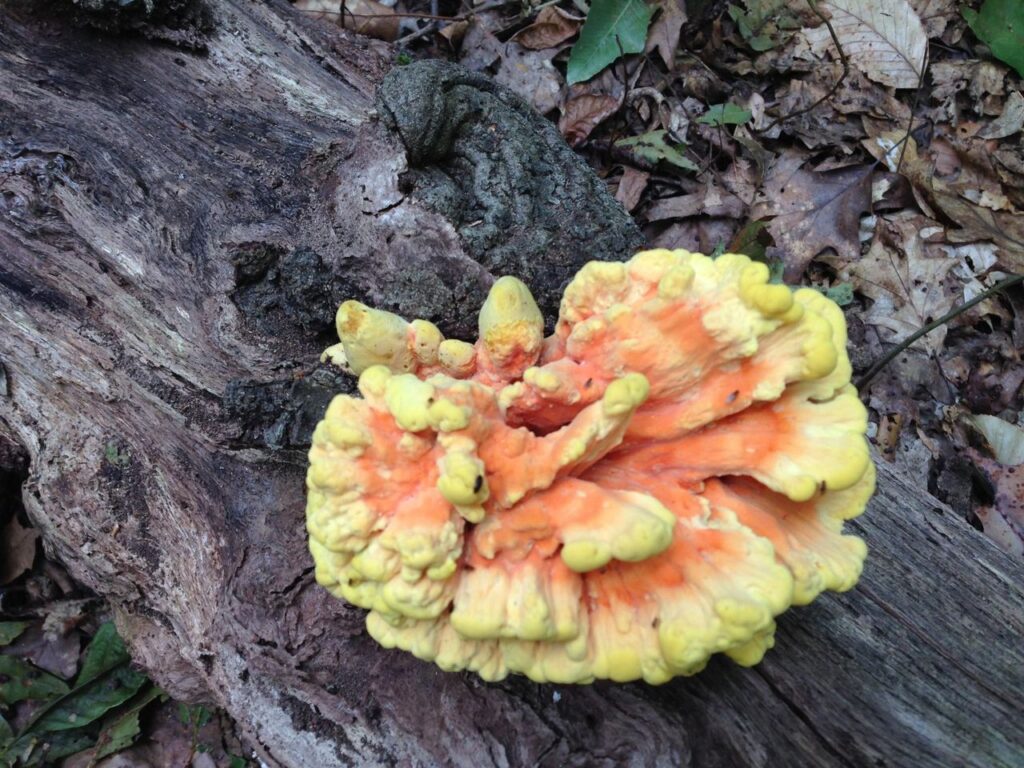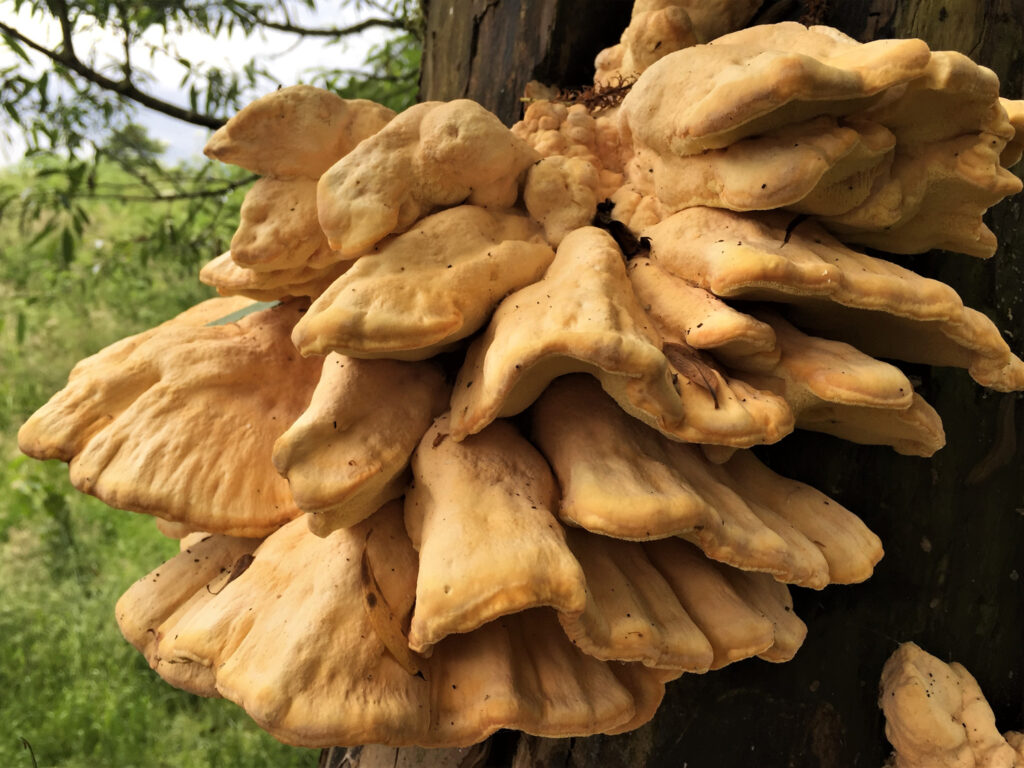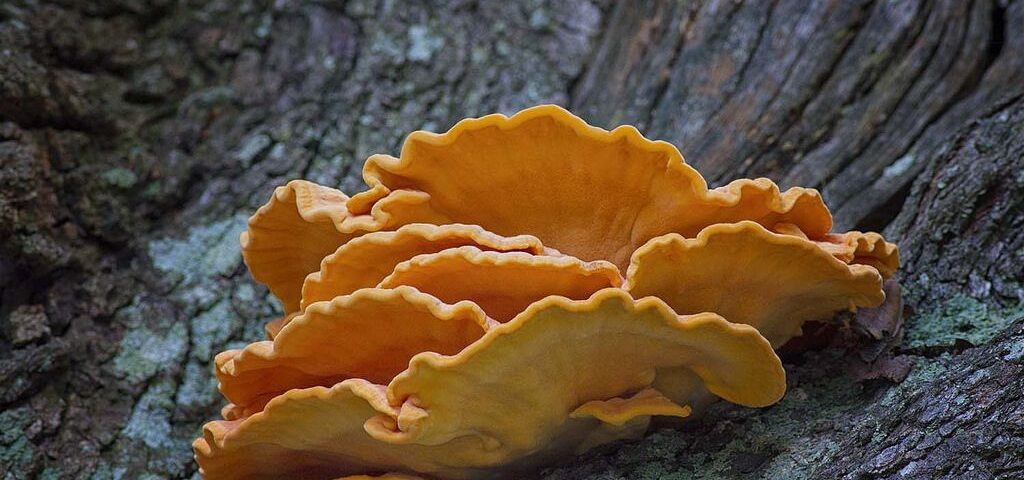The wild Mushroom, Chicken of the Woods, also known by its scientific name Laetiporus sulphureus, is a popular edible mushroom that is commonly found in North America and Europe. This mushroom is known for its distinctive flavor and texture, which has been compared to that of chicken meat. In this article, we will discuss the characteristics, habitat, identification, preparation, storage, historical uses, and possible look-alikes of the Mushroom Chicken of the Woods.
Where to find them:
The Chicken of the Woods mushroom is commonly found growing on the trunks and branches of hardwood trees, particularly oak and other species of hardwoods. They can be found in both deciduous and coniferous forests and are typically found in late summer and early fall.
How to identify them:
They can be easily identified by its bright orange or yellowish-orange cap, which is fan-shaped and can grow up to 2 feet wide. The cap is typically smooth and feels slightly spongy to the touch. The gills are not visible, and the flesh is thick and white. The stem is typically small and may be absent altogether. The mushroom can be found as a single specimen or in clusters.
Preparation:
The Chicken of the Woods is typically prepared by cutting the mushroom into small chunks and sautéing it with butter or oil. It can also be grilled, baked, or breaded and fried. The mushroom can be enjoyed on its own or as an ingredient in dishes such as soups, stews, and sauces.
Storage:
They can be stored in the refrigerator for up to one week, but it is best to consume it as soon as possible after it is picked. The mushroom can also be dried or frozen for longer storage.
Historical uses:
The Chicken of the Woods mushroom has been used for centuries as a food source and for its medicinal properties. Native Americans used it to treat a variety of ailments, including fever, colds, and gastrointestinal issues. It was also used as a natural dye for fabrics.
Possible look-alikes:
There are several mushrooms that some people say resemble the Chicken of the Woods, (although they really do not) including the sulfur shelf mushroom (Laetiporus cincinnatus), the artist’s conk (Ganoderma applanatum), and the false turkey tail (Stereum ostrea). These mushrooms may be toxic and should not be consumed.
Conclusion:
This is a delicious and versatile edible mushroom that is commonly found in North America and Europe. It is easily identified by its bright orange or yellowish-orange cap and thick white flesh. The mushroom can be prepared in a variety of ways and has a long history of medicinal and culinary use. However, it is important to be able to distinguish the Mushroom Chicken of the Woods from its look-alikes while foraging, as some mushrooms may be toxic.




